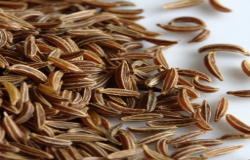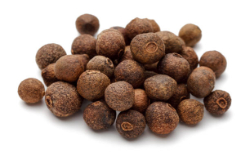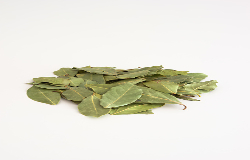Anise seed Nutrition facts
Anise seed

Do you suffer from gripping stomach pain? Or with cold and cough?
Take a few sips of anise seed mixed in hot water, and you instantly feel better. Nevertheless, these, tiny aromatic, spicy seeds indeed quite prevalent in many traditional cultures for their culinary and medicinal values.
Anise botanically belongs to the Apiaceae family in the genus Pimpinella and known scientifically as Pimpinella anisum. This little-known anise plant is native to Middle-East and Mediterranean region; probably originated on the fertile plains of the Nile delta in Egypt.
Anise is a perennial herbal plant that normally grows up to a height of about 2 feet. White flowers appear in umbels by July. Harvesting is done by bringing down the whole plant once its seedheads mature enough on the plant itself. Its seeds then separated from the flower heads by threshing.
Anise seeds feature oblong or curved, comma shape, about 3-4 mm long, light brown color, and fine stripes over its outer surface.
The seeds feature a delicately sweet and aromatic bouquet with a distinctive licorice flavor. Their special fragrance is due to essential oil, anethole in them.
Similar Food
-
 Allspice 263 Cal
Allspice 263 Cal -

-
 Bay leaf 313 Cal
Bay leaf 313 Cal -
 Black pepper 255 Cal
Black pepper 255 Cal -
 Capers 23 Cal
Capers 23 Cal
Source of Calorie
-
Carbs50.02 g 20%
-
Protein17.60 g 7%
-
Fat79.00 g 73%
How long to burn off 337 Calories?
*Approximate base minutes for a 25-year-old, 65 kg adult at moderate intensity.
| Nutrition Principle | Nutrition Value | Percentage of RDA |
|---|---|---|
| Principle | ||
| Energy | 337 Kcal | 17% |
| Carbohydrates | 50.02 g | 38% |
| Protein | 17.60 g | 31% |
| Total Fat | 79% | 15.90 g |
| Cholesterol | 0 mg | 0% |
| Dietary Fiber | 14.6 g | 38% |
| Vitamins | ||
| Folates | 10 μg | 2.5% |
| Niacin | 3.060 mg | 19% |
| Pantothenic acid | 0.797 mg | 16% |
| Pyridoxine | 0.650 mg | 50% |
| Riboflavin | 0.290 mg | 22% |
| Thiamin | 0.340 mg | 28% |
| Vitamin A | 311 IU | 10.5% |
| Vitamin C | 21 mg | 35% |
| Electrolytes | ||
| Sodium | 16 mg | 1% |
| Potassium | 1441 mg | 31% |
| Minerals | ||
| Calcium | 646 mg | 65% |
| Copper | 0.910 mg | 101% |
| Iron | 36.96 mg | 462% |
| Magnesium | 170 mg | 42.5% |
| Manganese | 2.300 mg | 100% |
| Phosphorus | 440 mg | 63% |
| Selenium | 5.0 mg | 9% |
| Zinc | 5.30 mg | 48% |